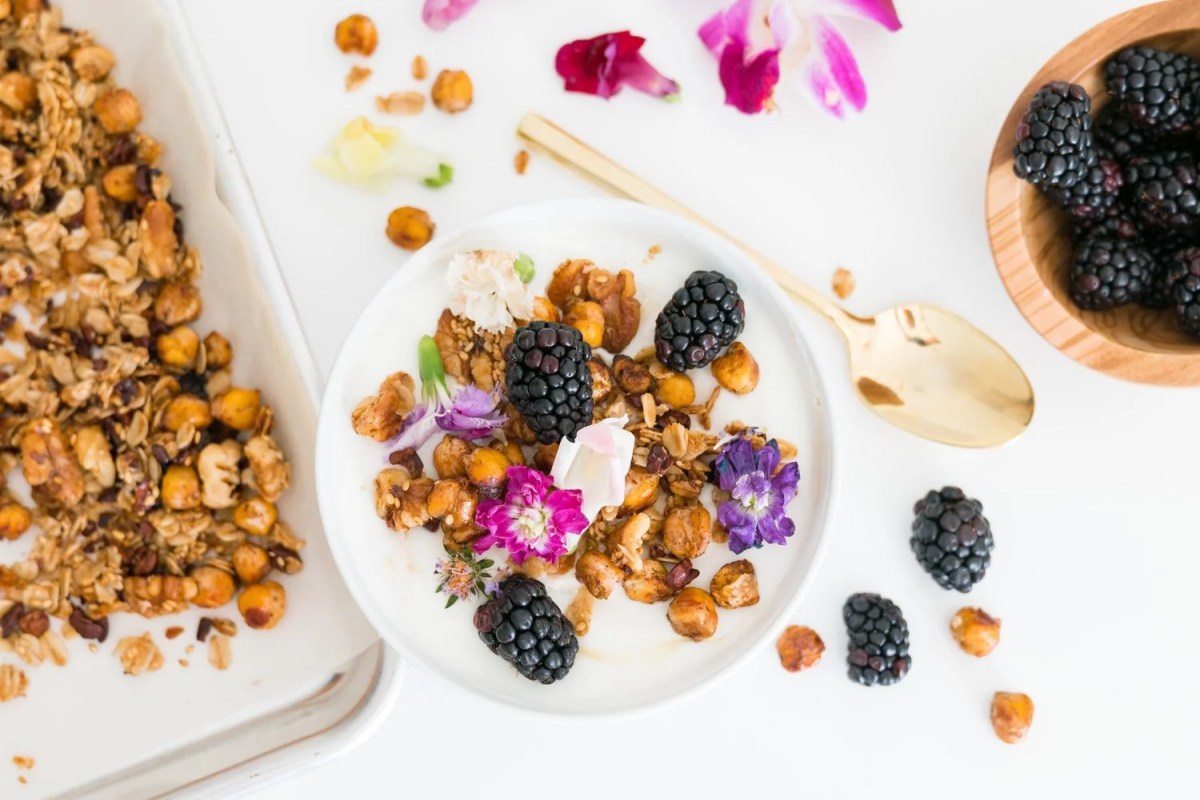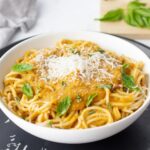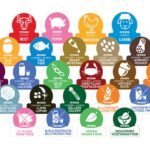Unlock a world of delicious possibilities with flavorful allergen-free recipes designed for everyone! This culinary journey explores the art of creating exciting and safe meals, free from common allergens like dairy, gluten, nuts, and soy. We’ll delve into creative ingredient substitutions that maintain rich flavor and texture, ensuring that dietary restrictions don’t compromise on taste. Learn to confidently navigate diverse recipe categories, from comforting soups to elegant baked goods, all while embracing inclusive cooking practices.
Discover simple techniques to transform everyday meals into allergen-free masterpieces. We’ll guide you through step-by-step recipe development, offering insightful tips and tricks for achieving optimal flavor and presentation. Explore a comprehensive guide to allergen-free ingredient swaps, understanding the impact on taste and nutrition. Finally, elevate your culinary creations with visually appealing plating and serving suggestions, making every meal a delightful experience.
Introduction
Flavorful allergen-free recipes represent a culinary approach that prioritizes both deliciousness and safety. These recipes are carefully crafted to exclude common allergens while maintaining vibrant flavors and textures that appeal to a wide range of palates. The goal is to create dishes that are not only free from potential health risks for individuals with allergies, but also exciting and satisfying for everyone to enjoy. This approach ensures that no one feels excluded from the pleasure of sharing a meal.
The careful substitution of ingredients is key to achieving this balance. Many common allergens, such as dairy, eggs, nuts, soy, wheat, and shellfish, can be successfully replaced with alternative ingredients that provide similar functional properties and enhance the overall taste profile.
Inclusive cooking recognizes the diverse dietary needs and preferences within our communities. Catering to those with allergies is not simply a matter of accommodation; it’s about creating a more welcoming and equitable culinary landscape where everyone can participate fully and safely in the joy of food.
Common Allergens and Their Culinary Substitutes
A significant aspect of allergen-free cooking lies in the skillful substitution of ingredients. Understanding the role of each allergen and its appropriate replacement is crucial for successful recipe adaptation. For example, dairy can often be replaced with plant-based milks like almond, soy, or oat milk, or with coconut cream for richness. Eggs can be substituted with applesauce, mashed banana, or flaxseed meal, depending on the recipe’s requirements. Nuts, a frequent source of allergy, can be replaced with sunflower seeds, pumpkin seeds, or tahini for similar texture and flavor profiles in certain dishes. Soy products can be substituted with alternatives like chickpeas or lentils, and wheat flour can be replaced with gluten-free blends containing rice flour, almond flour, or tapioca starch. Careful consideration of the specific role of the allergen in the recipe is essential for choosing the most effective substitute. For instance, substituting egg in a cake requires a different approach than substituting egg in a sauce.
The Importance of Inclusive Cooking
Inclusive cooking practices demonstrate a commitment to creating a dining environment where everyone feels comfortable and valued. By offering allergen-free options, we ensure that individuals with allergies are not excluded from social gatherings or special occasions centered around food. This approach fosters a sense of belonging and reduces the anxiety and stress that often accompany navigating food restrictions. Moreover, the development of allergen-free recipes often leads to culinary innovation, resulting in new and exciting flavor combinations that everyone can appreciate, broadening the culinary horizons for all. This benefits not only those with allergies but also those seeking healthier or more diverse dietary choices.
Recipe Categories

Embark on a culinary adventure with a diverse range of allergen-free recipes, each designed to tantalize your taste buds without compromising on flavor or enjoyment. This section explores various recipe categories, highlighting their unique characteristics and providing a glimpse into the delightful world of allergen-conscious cooking. We’ll delve into the flavor profiles, cooking techniques, and even explore the nuances of allergen-free flour alternatives.
Allergen-Free Recipe Categories
The following table showcases a selection of popular allergen-free recipe types, highlighting the primary allergen avoided and offering a brief description of each. These categories represent a starting point for your allergen-free cooking journey, offering endless possibilities for creativity and delicious meals.
| Recipe Name | Primary Allergen Avoided | Description | Example |
|---|---|---|---|
| Creamy Tomato Pasta | Gluten, Dairy | A rich and satisfying pasta dish made with gluten-free pasta and a creamy cashew-based sauce. | Imagine vibrant red sauce clinging to perfectly cooked gluten-free pasta, speckled with fresh basil and a hint of garlic. The cashew cream adds a velvety texture and subtle nutty flavor. |
| Dairy-Free Chocolate Brownies | Dairy, Gluten | Decadent and fudgy brownies made with almond flour and a rich, dairy-free chocolate ganache. | Picture intensely dark, almost black, brownies with a crackled top, revealing a moist, intensely chocolatey interior. The texture is rich and fudgy, with a subtle hint of almond from the flour. |
| Spiced Butternut Squash Soup | Dairy, Gluten, Soy | A warming and flavorful soup featuring roasted butternut squash, warming spices, and a creamy coconut milk base. | Envision a vibrant orange soup, smooth and creamy, with visible flecks of roasted squash and a hint of aromatic spices. The coconut milk adds a subtle sweetness and richness without the heaviness of dairy cream. |
| Egg-Free Lemon Poppy Seed Muffins | Egg, Dairy | Light and fluffy muffins bursting with the bright, zesty flavor of lemon and the crunch of poppy seeds. | Imagine golden-brown muffins, studded with tiny black poppy seeds, their tops slightly domed and slightly cracked. A delicate lemon aroma fills the air, promising a bright and refreshing taste. |
| Coconut Curry with Chicken or Tofu | Gluten, Dairy, Soy (depending on sauce) | A fragrant and flavorful curry featuring coconut milk, aromatic spices, and your choice of protein. | Visualize a rich, golden-brown curry, fragrant with spices like ginger, turmeric, and cumin. Tender pieces of chicken or tofu are nestled within the creamy coconut sauce, creating a visually appealing and aromatic dish. |
Flavor Profiles and Techniques
Each recipe category boasts unique flavor profiles and culinary techniques. Pasta dishes often highlight the interplay of fresh herbs and vibrant sauces, while baked goods emphasize the richness of alternative flours and the sweetness of natural sweeteners. Soups often feature a depth of flavor achieved through roasting vegetables and the careful balancing of spices. The techniques vary from the delicate art of pasta making to the precise measurements required for successful baking.
Allergen-Free Flour Comparison
Selecting the right allergen-free flour is crucial for successful baking. Different flours possess unique properties that affect the final texture and taste of baked goods.
| Flour Type | Baking Properties | Considerations |
|---|---|---|
| Almond Flour | Dense, moist, slightly sweet | Absorbs liquid quickly, best used in combination with other flours for lighter textures. |
| Coconut Flour | Very absorbent, creates a dense texture | Requires significant liquid adjustment, often used in smaller quantities in recipes. |
| Rice Flour | Light, slightly grainy texture | Can be dry, often combined with other flours for improved texture and moisture. |
| Oat Flour (certified gluten-free) | Slightly sweet, moist, binds well | Provides a good structure and moisture, often used as a primary flour. |
| Cassava Flour | Light, fluffy, neutral flavor | Can be slightly crumbly, often used in combination with other flours. |
Embarking on a flavorful allergen-free culinary adventure unlocks a world of delicious possibilities. By mastering ingredient substitutions and embracing creative techniques, you can craft exceptional meals that are both safe and satisfying for everyone. This journey celebrates inclusive cooking, where dietary restrictions don’t limit culinary creativity but rather inspire innovative and delectable dishes. From simple weeknight dinners to impressive special occasion meals, the art of allergen-free cooking empowers you to create memorable dining experiences for yourself and your loved ones, showcasing that delicious and safe can coexist beautifully.
Key Questions Answered
What are the most common allergens to consider when creating allergen-free recipes?
The most common allergens include milk, eggs, peanuts, tree nuts, soy, wheat, fish, and shellfish. Always check ingredient labels carefully.
Can I freeze allergen-free dishes?
Many allergen-free dishes freeze well. Consider freezing individual portions for easy reheating. Always label and date your frozen meals.
Where can I find allergen-free ingredients?
Allergen-free ingredients are widely available in most supermarkets, health food stores, and online retailers. Look for dedicated allergen-free sections or brands.
How do I ensure cross-contamination doesn’t occur when preparing allergen-free meals?
Thoroughly clean and sanitize all surfaces, utensils, and cookware before preparing allergen-free meals. Use separate cutting boards and cooking tools to prevent cross-contamination.


